
KINETICS AND CATALYSIS
Scope & Guideline
Innovating Through Interdisciplinary Research
Introduction
Aims and Scopes
- Catalytic Mechanisms and Kinetics:
The journal explores various catalytic mechanisms, emphasizing the kinetics of reactions catalyzed by metals, metal oxides, and other catalytic materials. This includes detailed studies on reaction rates, mechanisms, and the impact of various conditions on catalytic performance. - Development of Novel Catalysts:
Research on the synthesis and characterization of new catalytic materials, including heterogeneous, homogeneous, and biocatalysts, is a core focus. This includes studies on metal nanoparticles, zeolites, and composite materials. - Environmental and Green Chemistry:
The journal emphasizes the role of catalysis in environmental applications, including the degradation of pollutants, renewable energy conversions (like hydrogen production), and the synthesis of sustainable fuels and chemicals. - Theoretical and Computational Studies:
A significant portion of the research includes theoretical studies, such as density functional theory (DFT) and kinetic modeling, to understand and predict the behavior of catalysts and catalytic reactions. - Interdisciplinary Approaches:
The journal encourages interdisciplinary research that combines chemistry, materials science, and engineering to address complex problems in catalysis and reaction kinetics.
Trending and Emerging
- Photocatalysis and Sustainable Energy:
There is a growing interest in photocatalytic processes, particularly those aimed at sustainable energy production and pollutant degradation. This trend reflects the global shift towards renewable energy sources and environmentally friendly technologies. - Nanocatalysts and Nanostructured Materials:
Research on nanostructured catalysts, including nanoparticles and nanocomposites, is becoming increasingly prominent. These materials often demonstrate enhanced catalytic performance and selectivity, driving innovation in catalyst design. - Machine Learning and Data-Driven Approaches:
The integration of machine learning and big data analysis in catalysis research is emerging as a significant trend, facilitating the discovery of new catalysts and optimization of catalytic processes. - Biocatalysis and Green Chemistry:
There is an increasing focus on biocatalysts and enzymatic processes, which align with the principles of green chemistry. This trend highlights the importance of sustainable methods in chemical synthesis. - Advanced Characterization Techniques:
Research utilizing advanced characterization techniques, such as in situ spectroscopy and microscopy, is trending. These methods provide deeper insights into catalyst behavior and reaction mechanisms, enhancing the understanding of catalytic processes.
Declining or Waning
- Conventional Catalytic Processes:
There has been a noticeable decline in papers focusing solely on traditional catalytic processes without novel modifications or innovative approaches. Research is increasingly directed towards more advanced catalytic systems. - Basic Kinetic Studies without Novel Insights:
Papers that present basic kinetic studies without new theoretical frameworks or applications are becoming less common. The journal is favoring studies that offer innovative methodologies or applications in real-world scenarios. - Single-Metal Catalysts:
The emphasis on single-metal catalysts has decreased as research is increasingly oriented towards bimetallic and composite catalytic systems, which are often more effective and versatile. - Studies on Non-Catalytic Reactions:
Research focusing on non-catalytic reaction kinetics is less frequently published, as the journal's direction shifts towards catalytic applications and their efficiencies.
Similar Journals

Catalysts
Exploring the Frontiers of Catalysis and ChemistryCatalysts is a leading academic journal in the field of catalysis, published by MDPI since 2011 and well-regarded for its commitment to open access publishing. Based in Switzerland, this journal delivers innovative research and reviews that span various aspects of catalysis, from heterogeneous and homogeneous catalysis to the development of novel catalytic systems. With a commendable impact factor and a notable Q2 ranking in both Catalysis and Physical and Theoretical Chemistry categories, Catalysts plays a critical role in advancing the scientific discourse in these fields. The open-access model ensures that all research articles are readily accessible to researchers and professionals worldwide, fostering collaboration and accessibility to high-quality scientific literature. As the journal continues to publish cutting-edge studies up to its convergence in 2024, it remains an essential resource for anyone involved in catalysis research, from seasoned professionals to emerging scholars.

Russian Journal of Physical Chemistry B
Pioneering research in chemical science.Russian Journal of Physical Chemistry B, published by MAIK NAUKA/INTERPERIODICA/SPRINGER, serves as a vital platform for the dissemination of novel research in the field of physical and theoretical chemistry. With an ISSN of 1990-7931 and an E-ISSN of 1990-7923, this journal has established itself in the academic landscape since its inception in 2008, continuing to publish groundbreaking studies that push the boundaries of chemical research through 2024. Ranked in the Q3 category in Physical and Theoretical Chemistry, it holds a Scopus Rank of 139/189, showcasing its significance despite a competitive field. The journal does not currently offer open access but remains dedicated to advancing knowledge and innovation within its niche, fostering collaboration among chemists, researchers, and educators. As a valuable resource for those seeking to stay abreast of the latest developments and theoretical advancements, the Russian Journal of Physical Chemistry B is an excellent choice for professionals and students alike.
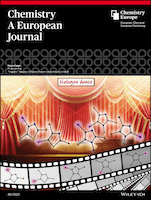
CHEMISTRY-A EUROPEAN JOURNAL
Unveiling Breakthroughs in Chemistry Since 1995CHEMISTRY-A EUROPEAN JOURNAL is a premier academic journal published by WILEY-V C H VERLAG GMBH, specializing in the diverse fields of chemistry and catalysis, with a distinguished focus on organic chemistry. Since its inception in 1995, the journal has established itself as an authoritative resource for researchers and professionals, currently classified in Q1 in Chemistry (miscellaneous) and Organic Chemistry, reflecting its high-quality contributions to the scientific community. With an impressive impact factor and robust Scopus rankings—#33 in Organic Chemistry and #26 in Catalysis—this journal serves as a vital platform for disseminating innovative research findings and critical advancements in chemical sciences. Although not an open-access journal, it provides valuable access options for institutions, ensuring wide reach and engagement within the scientific community. As it converges into 2024, CHEMISTRY-A EUROPEAN JOURNAL remains a key resource for anyone dedicated to advancing the frontiers of chemistry research.
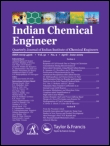
Indian Chemical Engineer
Innovating the Future of Chemical Engineering.Indian Chemical Engineer, published by Taylor & Francis Ltd, stands as a reputable journal in the field of chemical engineering, encompassing a wide range of topics pertinent to both academia and industry. With an ISSN of 0019-4506 and an E-ISSN of 0975-007X, this journal has been a key resource for researchers and professionals since its inception in 1992, undergoing a significant evolution from 2009 to 2024. Currently ranked in the Q3 category of chemical engineering (miscellaneous) in 2023, it reflects a dedicated commitment to disseminating innovative research and insights within the discipline. The journal is indexed in Scopus, achieving a rank of 148 out of 273, which denotes its growing influence in the field with a 45th percentile placement. Although currently not an open-access publication, it offers valuable content that contributes extensively to the advancement of chemical engineering research and education. Researchers, professionals, and students alike are encouraged to engage with this publication to stay at the forefront of industry advancements and academic discussions.
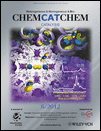
ChemCatChem
Elevating Chemical Understanding Through Rigorous Research.ChemCatChem is a leading international journal published by WILEY-V C H VERLAG GMBH that has been making significant contributions to the fields of catalysis, inorganic and organic chemistry, as well as physical and theoretical chemistry since its inception in 2009. With an established reputation for excellence, this journal holds commendable rankings in various categories, including Q1 in Inorganic Chemistry and Q1 in Organic Chemistry, demonstrating its pivotal role in advancing scientific knowledge and innovation. Notably, it has achieved a high Scopus ranking, securing 10th place out of 79 in Inorganic Chemistry, among others, showcasing its influence and quality. Although open access options are not available, the journal offers cutting-edge research articles, reviews, and insights that are vital for researchers, professionals, and students aiming to stay at the forefront of chemical science. With its address rooted in Weinheim, Germany, and convergence projected to continue until 2024, ChemCatChem remains a dynamic platform for disseminating vital advancements within the chemical community.
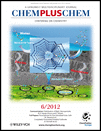
ChemPlusChem
Fostering Scientific Dialogue for a Brighter Chemical FutureChemPlusChem is a premier journal published by WILEY-V C H VERLAG GMBH, dedicated to the vibrant field of chemistry. With an ISSN of 2192-6506 and an impressive Q1 ranking in Scopus's 2023 category for miscellaneous chemistry, this journal serves as a significant platform for the dissemination of high-quality research and innovative findings. Since its inception in 2012, ChemPlusChem has fostered interdisciplinary collaborations, encapsulating a wide array of topics within chemistry that facilitate scientific advancement and education. The journal features a robust open access system, enabling extensive visibility for authors while providing easy-to-access resources for researchers, professionals, and students globally. Located in Weinheim, Germany, ChemPlusChem reflects international standards and ambitions, striving to enrich the global scientific community through rigorous research and engaging scientific discourse.

Theoretical and Experimental Chemistry
Uniting Ideas and Experiments for Chemical DiscoveryTheoretical and Experimental Chemistry is a well-respected journal published by SPRINGER, focusing on both theoretical models and experimental methods within the field of chemistry. Operating since 1965, this journal has established a rich history of contributing to the scientific community, with a converged publication history extending through 2024. Although it currently holds a Q3 ranking in the Chemistry (miscellaneous) category and a Scopus Rank of #286 out of 408 in General Chemistry, its reputation continues to grow in the academic realm, as it provides a platform for both emerging and established researchers to share their findings. The journal does not operate on an open access model, yet it offers valuable insights into diverse chemical research that can benefit professionals and students alike. Located in New York, USA, at ONE NEW YORK PLAZA, SUITE 4600, the journal aims to bridge theoretical insights with experimental validation, fostering a comprehensive understanding of contemporary chemical challenges.

Macromolecular Reaction Engineering
Transforming Research into Engineering ExcellenceMacromolecular Reaction Engineering is a leading academic journal published by WILEY-V C H VERLAG GMBH, dedicated to advancing the field of chemical and polymer engineering. Established in 2008, this journal focuses on innovative research and developments in macromolecular chemistry, highlighting the intricate processes involved in polymer reactions and engineering applications. With an ISSN of 1862-832X and an E-ISSN of 1862-8338, it serves as an essential resource for researchers, professionals, and students seeking insightful contributions in its diverse category quartiles, which include Q3 rankings in Chemical Engineering, Chemistry, and Polymers and Plastics as of 2023. Although it currently does not offer Open Access options, the journal is committed to publishing high-quality studies that align with current industrial and academic standards, promoting knowledge exchange in the field. By continuously evolving its scope, Macromolecular Reaction Engineering plays a pivotal role in shaping the future of macromolecular research and engineering practices.

APPLIED CATALYSIS A-GENERAL
Driving Research Excellence in Applied Catalysis.Applied Catalysis A-General is a premier journal published by Elsevier that serves as a vital resource in the fields of catalysis, process chemistry, and technology. Founded in 1991, this esteemed journal has garnered considerable recognition, reflected in its classification in the Q2 quartile for both catalysis and process chemistry in 2023, as well as its notable rankings within the Scopus database, placing it among the top 20 journals in related disciplines. With an ISSN of 0926-860X and an E-ISSN of 1873-3875, the journal provides a platform for researchers and professionals to disseminate cutting-edge research findings, facilitate knowledge transfer, and foster innovation in the field. While not an open-access journal, it remains accessible through institutional subscriptions, ensuring that critical findings reach a broad audience. The journal's objectives include advancing the understanding of catalytic processes and their applications, making it an indispensable tool for those engaged in this dynamic area of study. Applied Catalysis A-General continues to play a vital role in shaping the future of catalysis, contributing to both scientific progression and practical advancements in various industries.
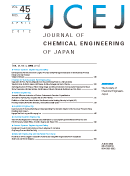
JOURNAL OF CHEMICAL ENGINEERING OF JAPAN
Bridging Tradition and Innovation in Chemical EngineeringJOURNAL OF CHEMICAL ENGINEERING OF JAPAN is a distinguished academic publication in the field of chemical engineering and chemistry, published by Taylor & Francis Ltd. With its ISSN 0021-9592 and E-ISSN 1881-1299, this journal has been a vital resource for researchers and practitioners since its inception in 1968 and continues to provide essential insights and advancements through 2024. The journal operates under an Open Access model as of 2023, promoting wider dissemination of research findings and encouraging collaboration within the global scientific community. Currently categorized in the Q4 quartile for both Chemical Engineering and Chemistry (miscellaneous) in 2023, it ranks within the lower percentiles of its respective fields, offering a platform for emerging scholars to publish their work and gain visibility. As part of Japan's academic landscape, it addresses numerous aspects of chemical engineering, fostering innovation and technical development that contribute to the industry's growth. Engaging with this journal is paramount for those looking to stay informed on the latest research trends and applications in chemical processes.